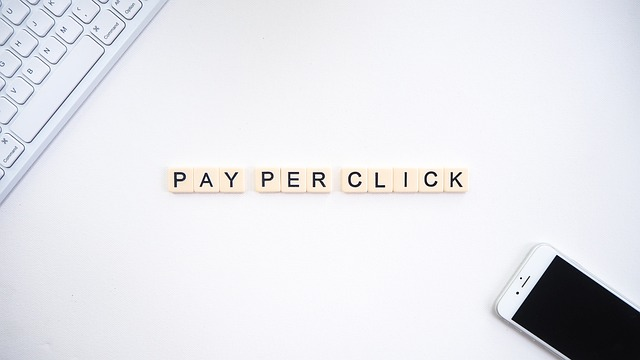Google Ads are a vital tool for marketers who want to increase traffic and reach more customers, but with these benefits, you’ll also encounter high competition.
Within Google Ads, your ads are displayed on Google’s search results pages. But Google Ads can also be displayed through other Google properties, such as YouTube, Gmail, Google Maps, Google Play, and Google Assistant. This means that Google Ads if done correctly, has the potential to reach a high volume of potential customers.
Learn more about competitive Google Ads in this YouTube video. Also, remember to subscribe to the YouTube channel for more tips on ads and social media marketing.

The Problem: Google Ads Competition Is Tough
The world of Google Ads is competitive, which is why many small businesses reach out to professional advertising agencies for help with their Google Ad campaigns. Digital advertising is a leading marketing channel, with 91% of marketing organizations using digital ads.
Competition is tough–and can be expensive. Increased competition is driving up the prices of Google Network ad costs, and the cost per lead for some is increasing every year.
When a large number of advertisers are all bidding to be ranked on that first search results page, your bidding will simply cost more. This makes it especially difficult for small businesses when other bigger ad spend competitors with larger ad budgets also want to show ads for the same keywords.
Example: Eco Store–The Problem
Let’s say you have an eco store and want to sell “eco-friendly products.” But guess what? You’re not alone.
When you have hundreds of other eco stores going into an auction for the same phrase match search “eco-friendly products,” you’ll spend more per click.
The Reason Google Ad Campaigns Are Worth It
Google Ads allows you to target the people who are actively looking for what you want to sell. That’s why digital ad campaigns can be an efficient place to spend your eCommerce marketing budget. There’s a higher chance that these searchers will go through the sales funnel and make a purchase.
All you need to do is know how to outsmart and beat the other competing advertisers. We’ll tell you where to get started.

Push Your USP (Unique Selling Point)
To compete in any market, you need to find your niche and make sure your ads put this unique selling point on display.
The key to competing with Google Ads is thinking about how to compete in any market. You need to have a unique selling point to stand out from the competition.
One of the first questions you get asked when starting a new business is, “What is your USP?” If you’re opening a store that’s identical to every other online store, you shouldn’t be starting it at all. Think about how your eCommerce is different from other online stores and advertisers.
If you find this difficult, consider doing a competitor analysis for inspiration. Examine your competition and try to see how their ads and offers are more competitive than yours. What can you offer that’s better? And, how can you increase your “click appeal”?
Example: Eco Store VS. Amazon—Find Your USP
Imagine that you have an eco store and want to sell eco-friendly products. Here’s the problem: One of the biggest companies in the world, Amazon, also sells eco-friendly products. So, how do you compete with a giant like Amazon? The solution is to ask yourself the following question: What do I have that Amazon does not?
Let’s say your eco store offsets its carbon emissions by planting woodland. This is something that buyers of eco-friendly products would value. Amazon’s business model isn’t built for that, so, you’ve just found one of your USPs.
Find what’s unique about your eCommerce store, and you’ll be able to take on the big fish.

Find USP Appropriate Keywords
Now that you’ve found your unique selling point, it’s time to use it to shape your search phrases and find the best keywords for your online business. Having a niche allows you to steer away from broader keywords and phrases, and explore “long-tail keywords.”
Long-tail keywords are longer, more specific keyword phrases, and they are the holy grail of SEO. They have lower search volumes, meaning lower CPCs (cost-per-clicks), and the best part is that a lot of marketers overlook long-tail keywords. But the truth is that they’re fantastic for paid advertising.
Use a keyword research tool to find inspiration for long-tail keywords, and use your niche to guide your choice.
Again, examine your competitors and find out which keywords they’re focusing on. You can either fight them for these keywords or find out which keywords fit you that others have been neglecting and focus on them instead.
Example: Eco Store VS. Amazon—Find USP Keywords
Amazon and other big companies might have claimed broader keywords such as “eco-friendly products.” But instead of getting stuck on shorter keywords like these, find a long-tail keyword related to your USP, such as “eco-friendly products with carbon offsetting.”
Fewer people will be searching for this keyword, but the ones that do are your ideal audience. They’re the ones who will run through the funnel and buy that eco-friendly product you know they’ll love. They’re the ones who will prefer you over Amazon because they love what you’re trying to do and want to support it.

Push your USP through the funnel
When you have your unique selling point and the perfect new keywords to show your niche off, you need to incorporate them into all your content. If you brag about your USP and focus on your niche in your ads, you’ll make it clear to potential customers why your page is click-worthy, and your competition’s isn’t.
However, you don’t want to restrict the power of your niche to only your ads. If you want to speed up your ads campaign, you want to push your USP all the way through the funnel. Make your future customers see what’s special about you every step of the way.
This includes shining a light on your USP, not only in your ad copy but also on your landing pages, your social media accounts and throughout your store. The keyword which highlights your uniqueness should appear and be the glue that connects the first ad a searcher sees to a product page.
Example: Eco Store—Push Your USP
The long-tail keyword that highlights your eco-friendly and carbon-offsetting niche doesn’t just appear in your ad. Since it’s your competing point, it also shows up and is expanded on when people get to the landing page and product page.
Your visitors should be reminded of what makes your eco store special, and this is what will turn them into customers.
Raise Your Search Engine Quality Score
Another key to competing in Google Ads is understanding the importance of your quality score. High-quality paid ads are rewarded with lower costs for ad spending and better positions.
The Google Ads auction works like this because Google doesn’t want to display its users bad ads. If they show viewers low-quality ads, they might lose searchers to competitors. And, more to the point, they won’t make any money if no one clicks on the ads.
This means that higher-quality ads will give you a higher ad rank and better ad placement. Your quality score multiplied by your highest bid equals your ad rank, and a high ad rank equals a high position on the SERP.
There are three main factors to work with when you want to improve your quality score:
Click-through rate (CTR)
Landing page experience
Ad relevance

Increase Your Click-Through Rate (CTR)
One of the best ways to increase your click-through rate is to differentiate your ad from other ads by using unique copy. Great news, you’re already on your way as you’ve just learned to highlight your unique selling point in your campaigns.
The following tips are other ways to increase your CTR further:
Utilize assets (Google Ads extensions)
Ad extensions are a quick way to increase clicks and conversion rates. They give you more space on your ad, which tempts searchers to click their way onto your page.Make use of numbers
Be specific in your ad copy. Don’t say, “Save a Ton of Money”; say, “Save 25% Now”.Entice with CTA (Call-To-Action)
Use a CTA to convey the need to act now, such as “Purchase Today” or “Get It Now.”
Implementing the tips above will help you increase your CTR, improve your quality score, and, thereby, your ad rank.
Improve Your Google Search Ad Relevance
When writing your ad copy, don’t forget that your ad should be highly relevant to the Google search query and the person searching.
The following tips are ways to improve your ad relevance in your campaigns:
Include your keywords
Use your keywords in both the headlines and descriptions of your ads. Remember that Google will bold the search query when it appears in your ad.Have a tightly-themed ad group
It’s more work, but creating a Google Ads account structure with 10–15 keywords in every ad group will improve ad relevancy. If you notice that you have low-quality score keywords, consider creating your own ad group for them or simply removing them.Hone in on your targeting
Utilize audience targeting and geotargeting to narrow down ads to particular locations and audience segments.
Putting in the effort and following these tips increases the relevance of your ad, which in turn will improve your quality score and ad rank.

Optimize The Landing Page Experience
Having a great landing page experience isn’t just important for your quality score—it’s vital for your conversion rate. Let’s not forget that you’re here for conversions, which should be the focus of your campaigns.
The following tips are ways to improve your landing page experience:
Be consistent
Your landing page message and content must be consistent with the ad that brought a visitor to your landing page. Keep a similar style for your ad copy and the content.Have a clear message
Write concisely, explain the benefits of your business, and use CTAs to draw potential customers through the funnel. Don’t forget to complement the text with relevant images.Don’t be generic
Don’t make your homepage the landing page of all your search ads. Try to create unique landing pages for your different ads and products, giving users a more tailored experience.Keep mobile devices in mind
Make it easy for your visitor. The landing page should work well on all device sizes, and operating systems, mainly Android and IOS devices. Around 52% of online traffic in the US is from mobile devices, so don’t forget to cater to this large group.
Taking the time to look at these steps in more detail will give visitors a great landing page experience, and your quality score and ad rank will reflect that.
Final Thoughts On Google Ads In High Competition Sectors
Pushing your unique selling point and finding ways to raise your quality score are important ways of making Google Ads work in high-competition sectors. Don’t underestimate the power digital advertising has on your eCommerce.
Remember that your future customers are using Google to find you. Remind them why they should click on your ads instead of your competitor’s ads. Tell them why you’re special. Use the right keywords to emphasize your niche, and push those keywords all the way through your ad campaigns and landing pages.
Don’t forget to implement our tips on how to raise your quality score and, thereby, also raise your ad rank. Increasing your click-through rate (CTR), improving your landing page experience, and refining your ad relevance will all contribute to your quality score.
There are many other tips to make your Google Ads stand out from the competition. Use the tools available to you, such as Google Analytics, and video ads, perfect your bidding strategy with bid adjustments, and constantly review track of how your keywords are performing.
If all of this seems overwhelming for you as a business owner, don’t forget that there are Google advertising experts who would love to help you optimize your Google Ads campaigns.
If you need more help on how to outsmart your competition, reach out to Max Sinclair on max@snowballcreations.com.